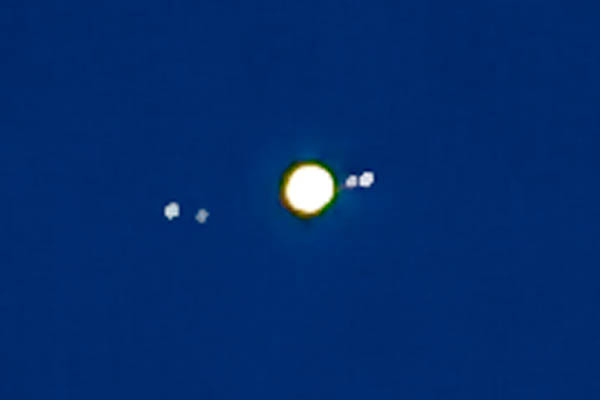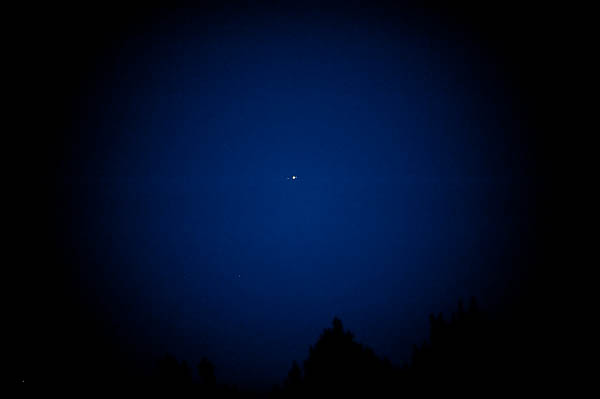|
Text & photo: Torsti Mäkinen One evening in late September I was out looking for roe-deer. When the sun had set I had not seen anything even remotely resembling a deer. The darkness fell and I should have gone home, had it not been that the sky was clear and the moon gave some light over the field. There was one particularly bright star in the sky and I knew it actually is a planet, the Jupiter. From somewhere I had heard or read that right now Jupiter is extremely close to the Earth, "only" so and so many millions of kilometres from us. So I found some good support for the rifle and looked at the planet through the 12 X rifle scope. To my great surprise I saw not only Jupiter but also 4 of its largest moons very clearly. I was rather fascinated, thinking of Galileo Galilei who had seen the same sight 400 years earlier, in the year 1610. I thought that I might try to photograph the planet with its moons, just to see if it works. The next night I had set up a Nikon D700 with a Nikon 80 - 200/F2,8 AFS-I ED lens. ISO setting was 200, F2,8. I experimented with the exposure from 1/5 - 5 seconds and the difference was indeed not too big. Work on the RAW file in the Photoshop Lightroom was of course needed. I am rather pleased with the result, Had I had the camera with me the first night I could have got a slightly better composition of the moons, they were in a very neat line with Jupiter. In this photo, taken the next night, they had already moved a lot in their orbits around the planet and they move fast, much faster than our own moon.
Earlier, many years ago, Halleys comet passed us in close range and I tried to photograph that one also. In those days I used negative film and I got some kind of image of the comet, remember it had nothing nearly as strong light that Jupiter has, but the opportunity to work with a RAW file was not there and I am not sure if I even saved the photo. |

